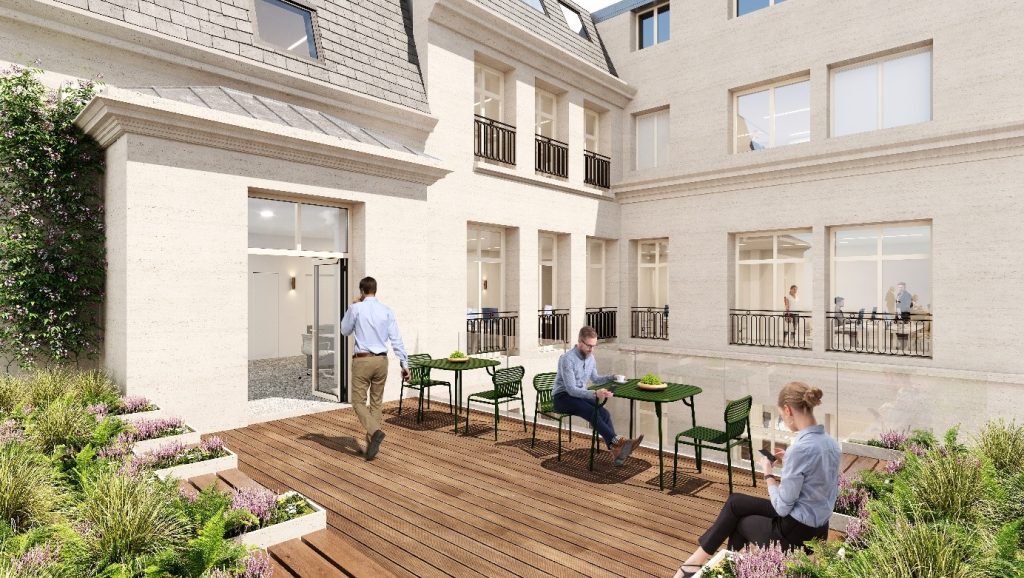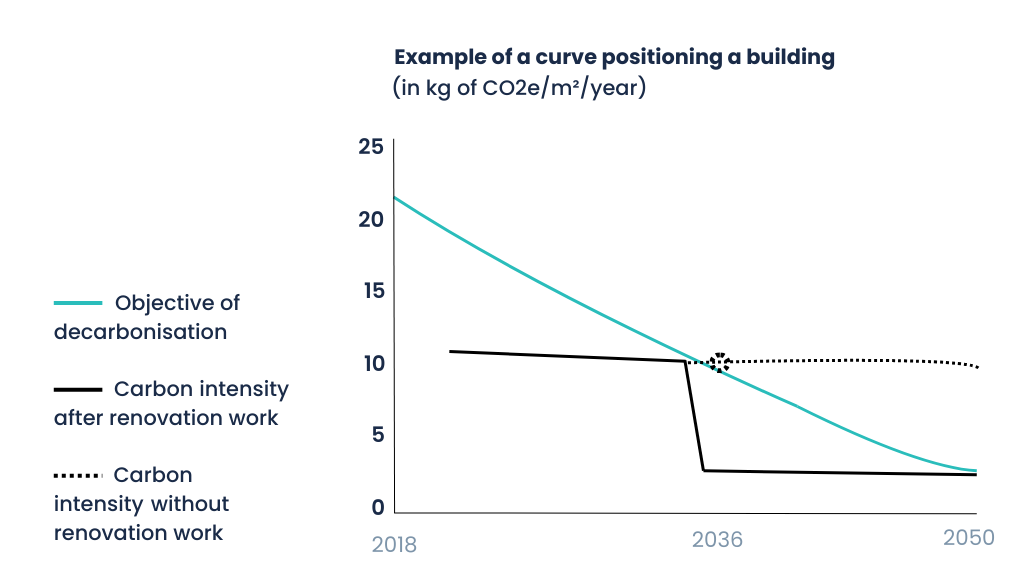The decarbonisation of buildings is also a good opportunity to carry out work to adapt them to new ways of working: we are increasing the flexibility of use of the building in order to promote exchanges between employees, and we are improving the user experience (services, fitness, outdoor spaces, etc.). This approach is all the more value-creating as it ensures an increase in rents coupled with a very low vacancy rate.
Defining a decarbonization plan:
Prior to the acquisition of a building, a decarbonisation plan must be drawn up, taking into account, with regard to the expected target rents, the many works to be carried out to reduce its carbon footprint: insulation, heating, air conditioning, lighting, energy used or produced on site, etc. This is what we did with our latest acquisition of an office building to be restructured in the CBD, located at 18 rue de l’Amiral Hamelin, in Paris 16th. As soon as we acquired it, we established an ambitious decarbonization plan that was integrated into our project of works such as connection to heating and district cooling, insulation from the inside, etc. However, this decarbonization plan could be spread over several years. It requires in-depth knowledge of existing buildings and works, as well as good repositioning skills.
The goal of net-zero emissions by 2050 will often require very heavy investments for real estate asset owners, at the risk of severe depreciation, as the market will increasingly distinguish between “green” and “brown” properties. This is why, as part of our operation on 18 Hamelin, we have already targeted the orientations of the tertiary decree until 2050. This perspective encourages us to be very selective, but also to seize opportunities that will involve investment or the financing of decarbonization plans for buildings, which are likely to create strong value.


